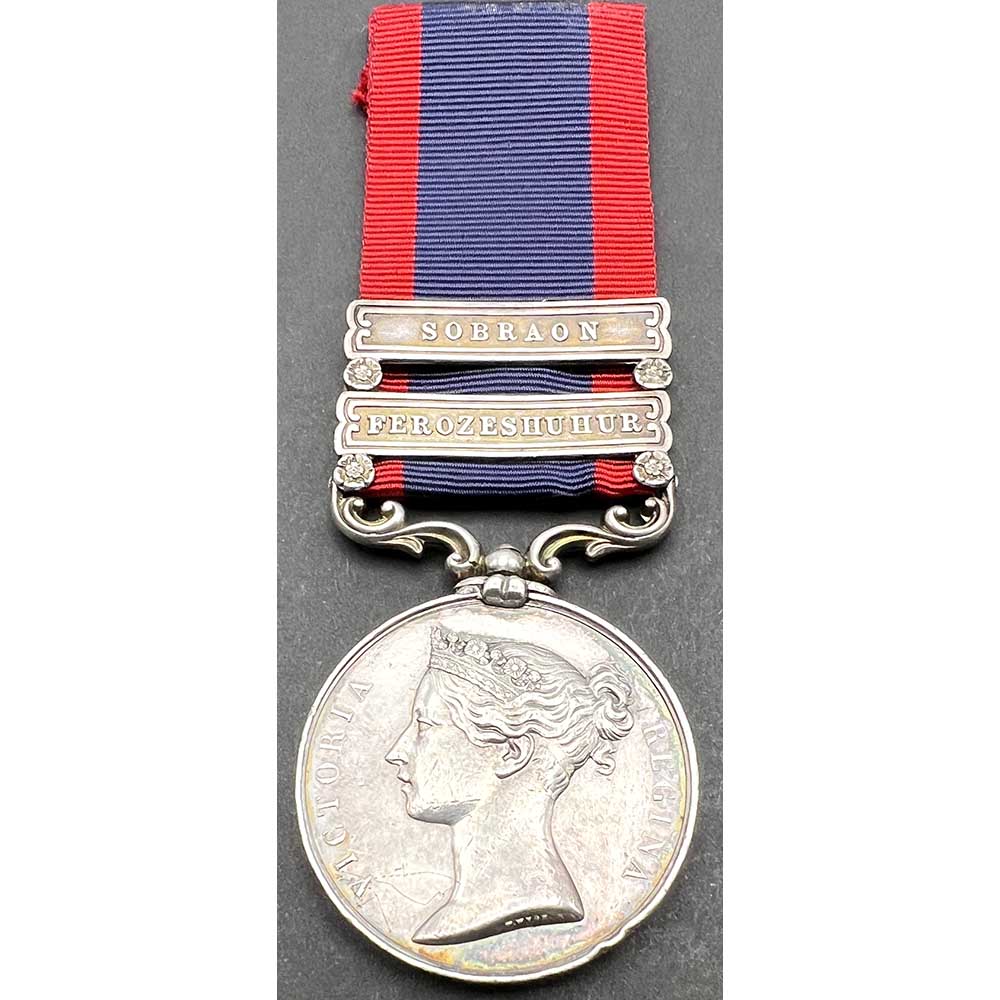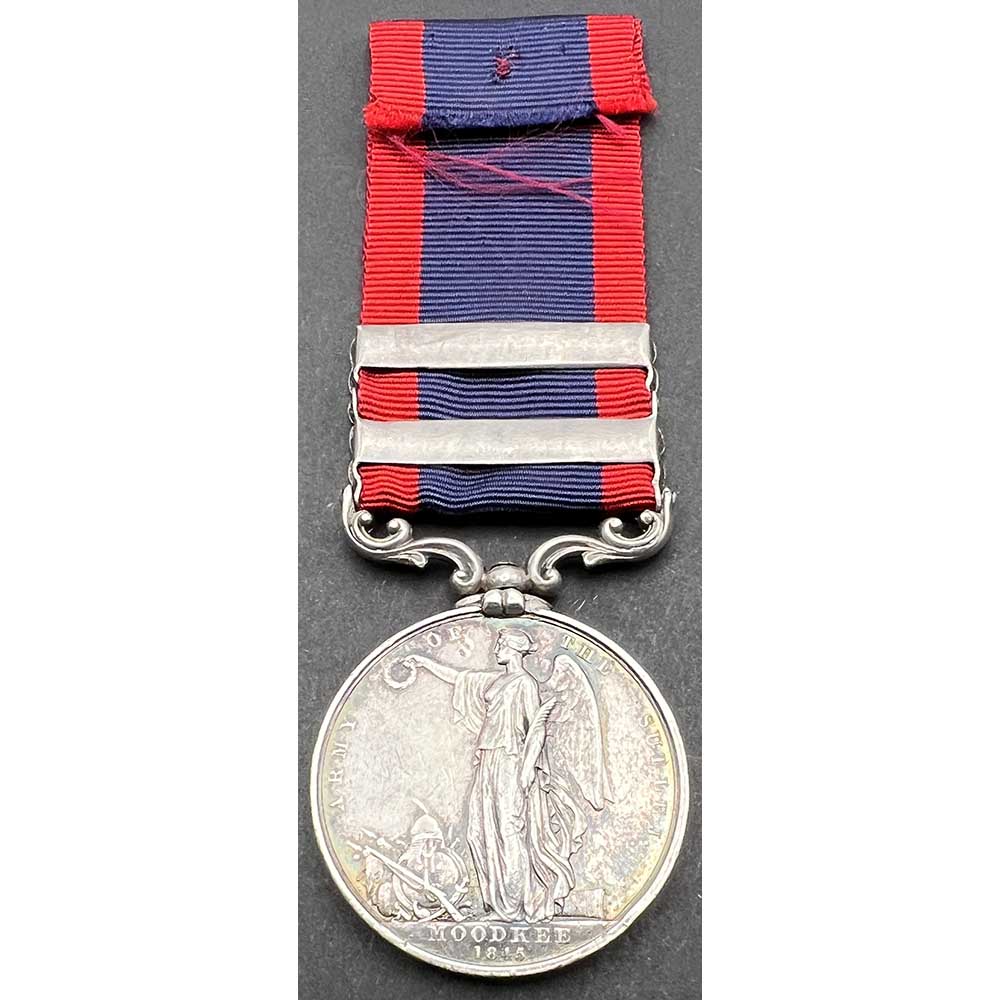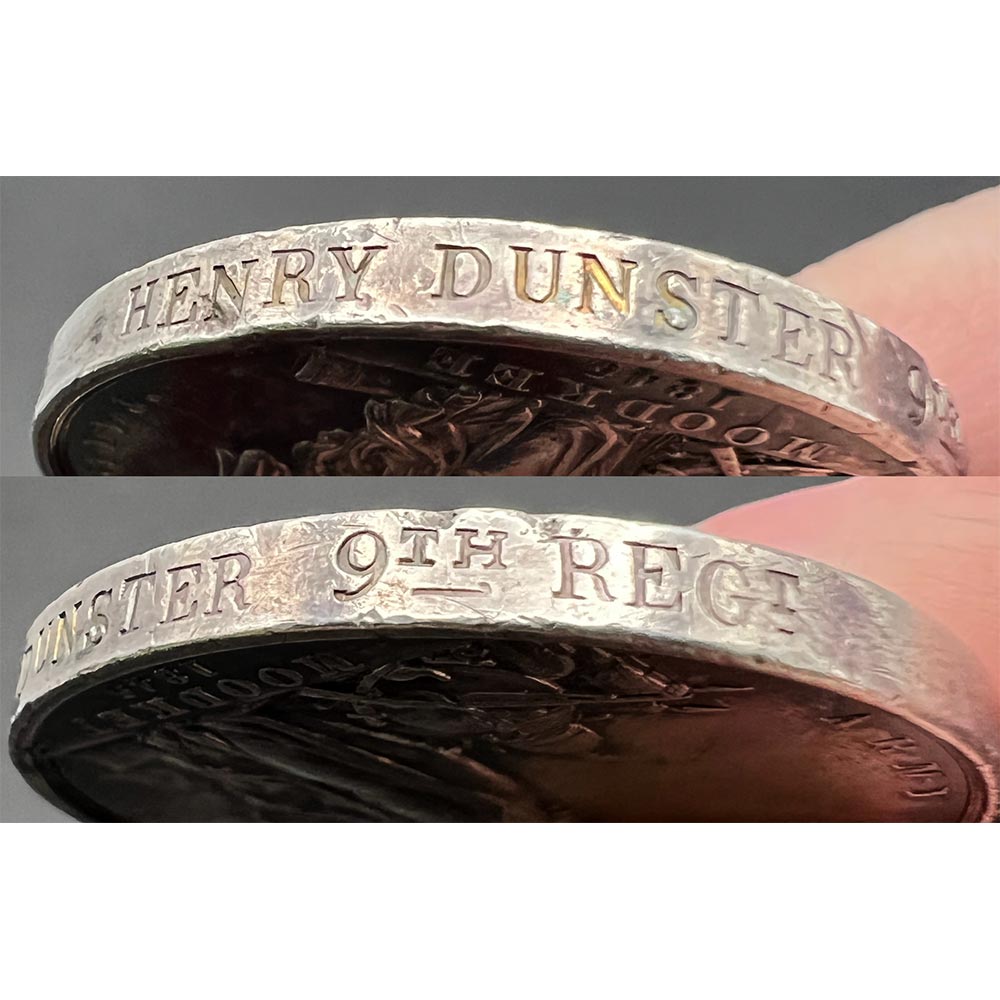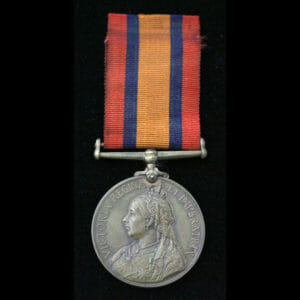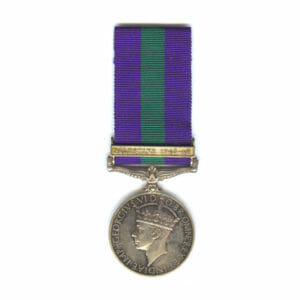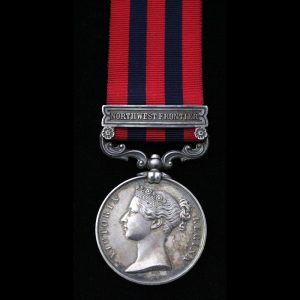Description
Sutlej Medal, Moodkee, 2 bars, Ferozeshuhur, Sobraon, Pte Harry Dunter, 9th Regt, a heroic Original Defender of Lucknow in 1857 with the 32nd Light Infantry when Killed in Action at Chinhut 30th June 1857.
Private Henry Dunster had before the Indian Mutiny began, already fought in the last 2 Sikh Wars, and a seasoned veteran in battle, having fought at Mudki (Wounded), Ferozeshuhur, Sobraon, then Siege of Mooltan and at Goojerat during the Punjab War.
Wounded in action at the Battle of Moodkee on 18th December 1845
Officially impressed: “HENRY DUNSTER 9th REGT” Some edge bruising and general wear between the about 12 years of service between issue and his death.
Confirmed through muster rolls and detailed research to be the same man who had been wounded in the Sutlej campaign at Mudki to transfer over to the 32nd Foot at Meerut on 1st November 1846, these transfers are noted in the regimental history when about 175 men volunteered for various units.
Service Details:
Enlisted in the 9th Foot during September 1844. Service number 2228 with the 9th Foot.
Joined the regiment in India and fought through the Sutlej Sikh War of 1845-6.
During the war he was engaged in action at the Battle of Moodkee, 18th December 1845, Battle of Ferozeshah (Ferozeshuhur), 21st December 1845, culminating in the Battle of Sobraon on 10th February 1846.
It is confirmed that he was wounded in his first battle, at Moodkee on 18th December, but managed to “Soldier On” to fight 3 days later at Ferozeshah, later fighting at Sobraon.
After the end of the Sutlej War, the 9th Foot, who had spent many years overseas, were beginning to plan their return home and he was one of those that chose to remain in India, transferring over to the 32nd Regiment (32nd Light Infantry) on 1st November 1846.
Held the service number 2972 with the 32nd and shown on the 1851 Army Index as stationed with the 32nd in Jalandhar India (Punjab).
However during 1848-9, the regiment fought in the “Punjab” Sikh War, including Henry, where he would add some further battle honours to his service, seeing action at the Siege of Mooltan, and the Battle of Goojerat
He was with the famous 32nd “Cornwall” Regiment during the Indian Mutiny, during which time he was amongst those besieged in the City of Lucknow being an “Original Defender” of Lucknow.
He was one of the unfortunate soldiers of the 32nd, to go on the sortie to Chinhat or Chinhut on 30th June 1857, where in a disastrous battle, they were forced into retreat, having to leave behind those men like poor Private Dunster, who were killed or mortally wounded on the battlefield, he was amongst 112 Europeans Killed and 44 wounded, it is unclear how many mutineers engaged them, but it is believed that the enemy force numbered 10 times their size, a Victoria Cross was awarded for the battle to an Officer who saved some men of the 32nd.
THE SIEGE OF LUCKNOW
It is interesting to note that this medal itself was most likely sitting inside of Lucknow during the historic siege, and left behind with his belongings as he went out with the gallant 32nd to engage the rebels at Chinhat, about 750 brave volunteers went out on a sortie, and became engaged with a force almost 10 times their size, being heavily cut down and forced back inside the city.
William George Cubitt VC, of the 13th Bengal Native Infantry was awarded the Victoria Cross for saving 3 men of the 32nd LI at the battle risking his own life.
There was about 300 infantry present from the 32nd Foot, about 230 extra from the 13th, 48th and 71st Native Infantry, it is believed that during the battle many of the native sepoys switched sides.
Henry Polehampton recalls the day in his diary as a wounded Officer rode back into town held up by 2 Sikhs:
“The first thing I saw was an officer, evidently wounded, riding up, supported on each side by a Sikh. I ran down to the great door of the house to receive him, and found it to be Lieutenant Campbell, 71st Regt, one of the Volunteer Cavalry.
He was shot through the thigh and was very pale and weak, and exhausted.
From him I learned, to my dismay, that our men had been completely beaten, fearfully outnumbered; that they were coming in pell-mell; and that it was doubtful whether they would be able to save the guns. I helped to take him to the hospital, and had hardly done so, when there came in, in quick succession, James of the Commissariat, shot through the arm, Thompson, 32nd, Mortally Wounded, and others; amongst them an artillery man with both his hands blown off. By about 12 o clock the whole of the remains of our small force had come in, hard pressed by the enemy, who had taken 2 Howitzers and 1 9 Pounders. Colonel Case, Captain Stevens, Lieutenant Brackenbury, and about 112 NCO and Men, were left behind on the field.”
Casualties sustainted at Moodkee by the 9th, amongst Pte Dunster:
“The 9th Foot sustained the loss of its Lieutenant Colonel, major General Sir John McCaskill, KCB and KH, an officer to whom his country was indebted for long and valued service, who received a ball through his chest, on the advance of his division, and immediately expired.
The other casualties were 2 rank and file killed, 1 Officer, 2 Sergeants and 47 Rank and File wounded.”
The 9th Foot regimental history records at the period of his transfer:
“The 9th Foot remained at Lahore unti the 23rd March 1846, when the army was broken up, and the regiment received a route for Meerut, at which station it arrived on the 15th April, and continued htere until the 23rd OCtober, when it commenced its march for Dinapore, 175 men having previously volunteered to different regiments in India.
On its arrival at Allahabad, a 2nd Volunteering was directed, the regiment now being under orders to embark for England, when a further number of 154 men transferred their services to other corps.”
